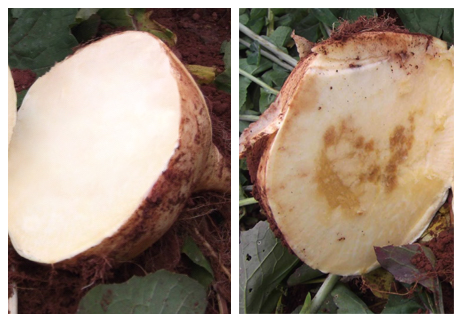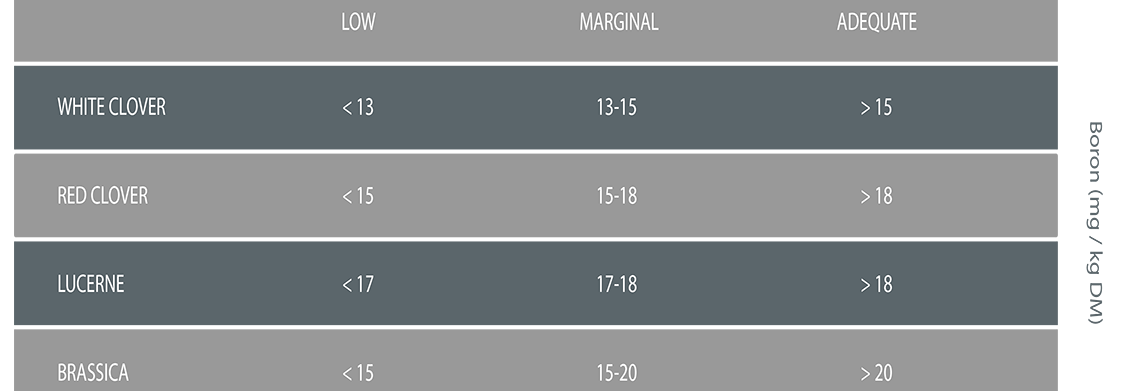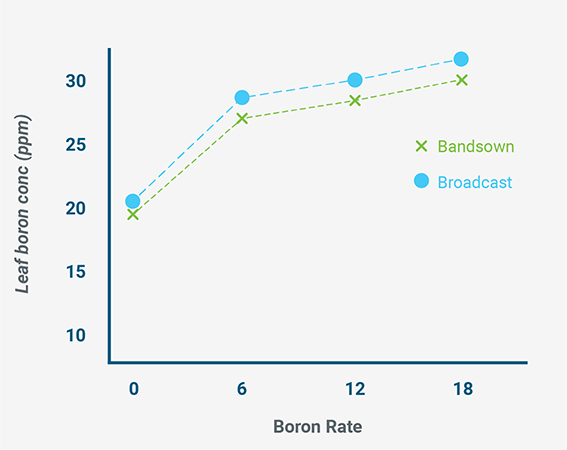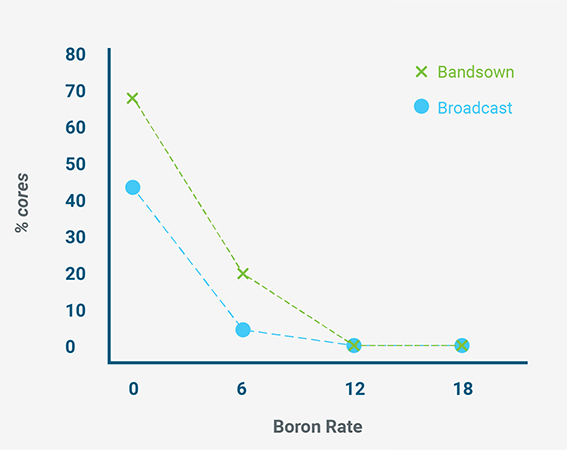NutriMax Boron 15%
Boron (B) is an essential micronutrient that aides in the formation of new plant tissue and improves the storage quality of brassica bulb crops.
![]()
![]() Boost beet and brasica growth and quality
Boost beet and brasica growth and quality
Boron enhances the structural integrity of plant cells. For this reason boron is required for the healthy formation of new plant tissue, effective clover nodulation, nitrogen fixation, flowering and pollination.
Symptoms of deficiency
Crops such as brassica’s or fodder beet need to take boron up early in their development cycle in order to prevent diseases like ‘brown heart’ (below).

![]()
Widespread opportunity
There is a boron deficiency in many areas across New Zealand and it is notably low in pumice, peat and sandy soils. However deficiencies also occur across a range of other soil types.
Boron deficiencies affect a number of crops, specifically brassicas, beets, lucerne, and legume seed crops. In order to confirm a boron deficiency in plants, a herbage analysis is essential.
The table below indicates critical plant boron levels:

![]()
Supplementing boron
Boron is immobile in plants, so it can’t be redirected around the plant to overcome problems and once cellular damage has occurred, it cannot be corrected. To be effective, boron should be applied at the sowing stage or soon after in a soluble, readily-available form.
In order to prevent boron deficiencies, boron should be included in the fertiliser programme for brassica and fodder beet crops. A Ballance Nutrient Specialist can recommend the right product and application rate for your situation.
![]()
The benefits of supplementation
Herbage growth

Brown heart reduction

